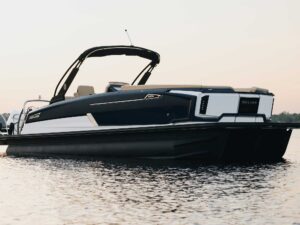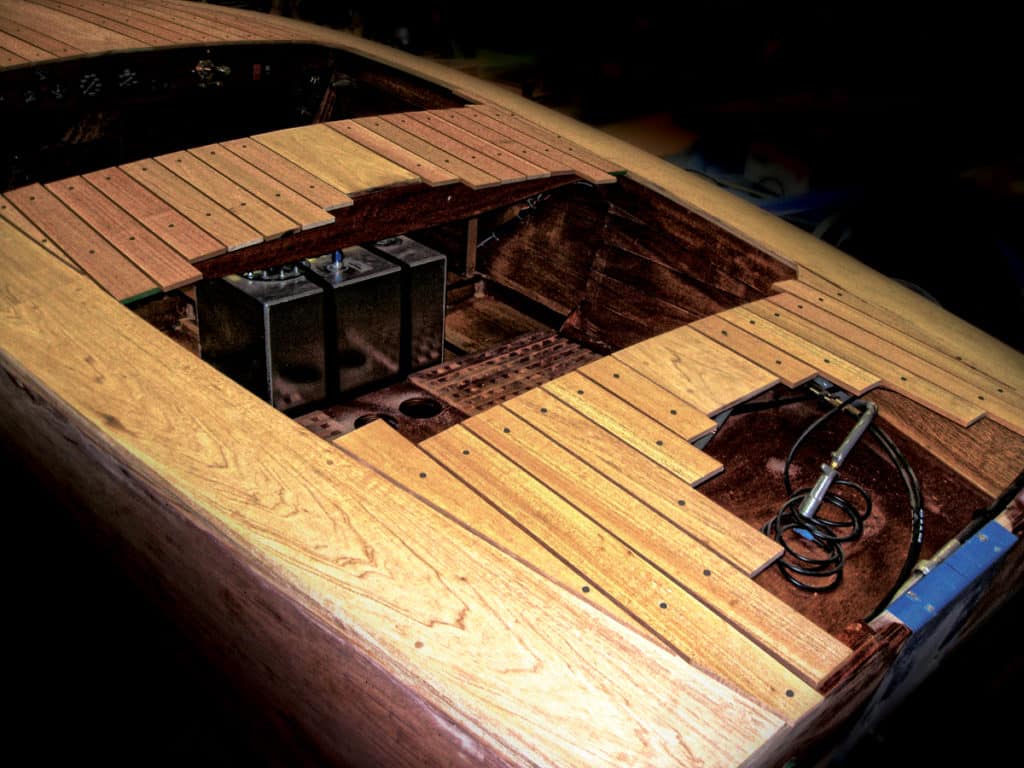
I used to dream about building a boat. Though I’ve restored some so poorly preserved they felt like new builds, the closest I’ve come is as a kid when we’d pilfer our subdivision’s burn piles for scraps and pound them together into simple barges. We’d forgo the niceties of caulk and paint, and the final project looked good to our untrained eye. An older buddy, who went on to be an engineer, quickly assessed our prospects for sailing, and they were dismal at best. They floated long enough to get us off the shore, but not long enough to get us in deep water. The three boatbuilders in this story took a more cerebral approach and came up with showboats. Boating Magazine
Just like every journalist has the next great American novel unwritten in the back of his mind, every boater worth his salt is struck at some point with the idea to build his dream boat from scratch. But is that such a good idea? If you’ve got the time, why not?
We caught up with three boaters — none of them naval architects — who bought boatbuilding plans and took, or are taking, the concept from paper to water. Read their stories and find out what it takes to build your own boat.
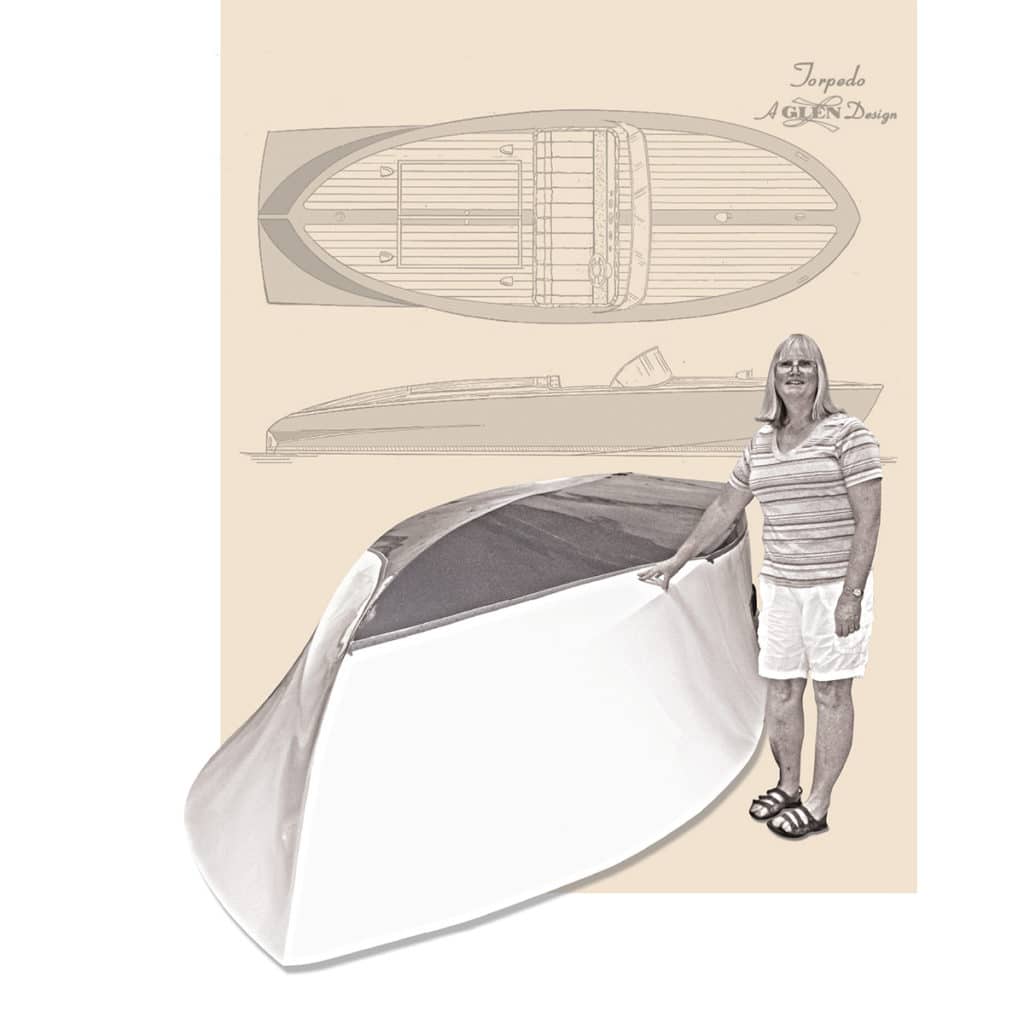
Roberta Hegy’s Torpedo
Finished Cost (est.): $35,000 (including power)
Some people might say Roberta Hegy has too much time on her hands. She’s reinvented her career three times and simultaneously built and sold two planes, a hydroplane and a “woody” outboard runabout and is in the process of building her third boat, a Glen-L Torpedo. The Torpedo is Glen-L Marine founder Glen L. Witt’s most recent design, and Roberta’s prototype build is currently proofing the inboard’s plans. Her launch date is Memorial Day 2015.
“Now, I’m in process of painting the bottom,” Roberta reflected. I was sure she was running her finger along a calendar as she spoke. “Then I’ll let it set up. Then I’ll do a bit of compounding and buffing. I’m hoping to have ‘The Flip’ by Labor Day.”
The Flip is a momentous occasion among boatbuilders. Their dream boat begins upside down on a frame or rack called a jig or strongback. They painstakingly fit and assemble the ribs, stringers and plywood or plank skin to complete the structure and hull. The hull finish is applied, and then the hull is flipped.
After The Flip, Roberta has her winter planned out.
“I’ll install an engine and fuel tank, do interior, electrical, then decking and other systems by Christmas. I’ll deck it by spring and then finish the top and put on all the bling,” she said.
Roberta makes it sound easy. But then she’s done this before. And she has an insatiable drive to build her skills in career and hobby. Her husband takes part, more as a sort of governor, that mechanical mechanism that keeps an engine from racing itself to death.
“Mostly he keeps me from going overboard,” she said, her tone complementing his tolerant patience with her industry.
You’d think since she’d built a Searey floatplane and a Van’s RV-7A she was an engineer or a nuclear physicist.
“I was a noncredited engineer,” she joked. Roberta’s day job was working with We Power in Wisconsin. She was in equipment repair and servicing, a self-taught welder who saw a cool opening at a nuclear plant.
“I wanted to know what it would take to work there, and the supervisor said, ‘Get a degree and I’ll hire you.’ So I got an associate degree in fluid power.” Roberta raced through the degree going to night school and snagged the job.
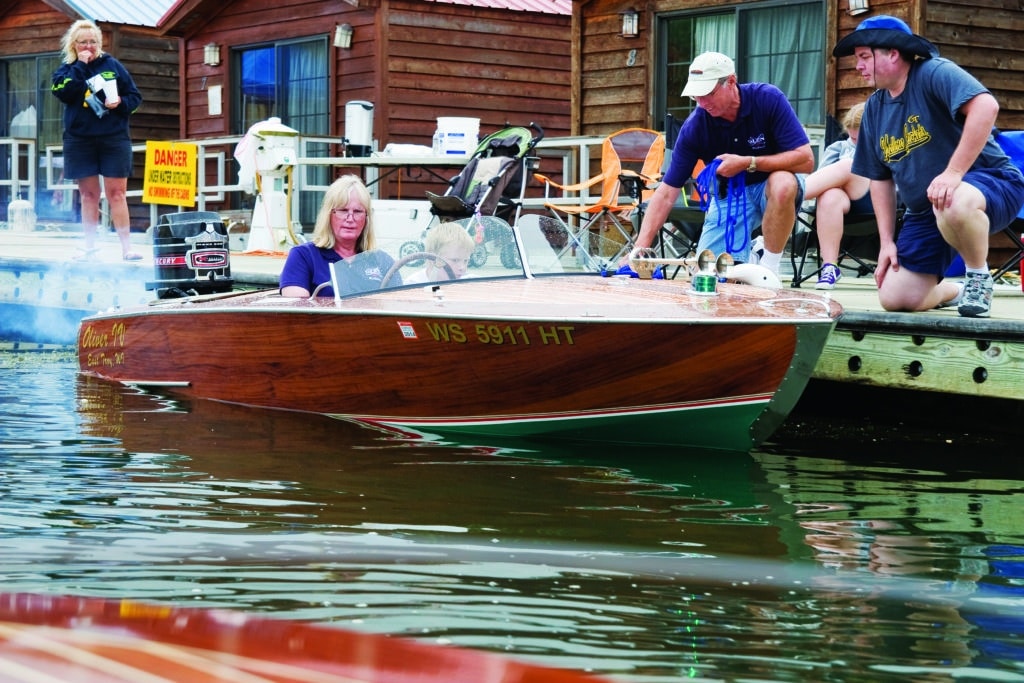
So she’s tech-minded, but pretty realistic about building boats.
“Dad and I used to do a lot of woodworking. I always loved mahogany, and the look of the old boats. I was thinking of building a barrelback,” Roberta said, a reference to a style of runabout that amounts to a symphony of curves, but she decided to dip her toes in a smaller way before plunging in on a classic style like that.
She found a Glen-L Spartan, a small hydroplane abandoned by a local builder, and bought the partially constructed project for a pittance.
“I think boatbuilders should start out small. That way if they lose interest, there is little to lose by walking away from it,” she advised.
After the Spartan was a success, she began the Zip, Glen-L’s second most popular design. The 14-foot outboard runabout appealed to her love of woodworking, mahogany and the classic “Chris-Craft look” no boater can avoid admiring.
“I was going to call her the SeaBay,” Roberta joked. Most of the hardware on it came from browsing eBay. She gathered the cleats and eyes and chrome trim she wanted and had them refinished.
What will Roberta do with the Zip when she finishes the Glen-L Torpedo?
“I’ve got to make room. I’ll sell it,” she lamented. Judging from the sleek look of her boat, and her experience selling her homebuilt airplanes, it won’t be hard.
Glen-L Marine
Gayle Brantuk is vice president and owner of Glen-L Marine, the company founded by her father, Glen L. Witt, in 1953.
“When my dad and his brother were younger, they liked to boat and build boats. It was the Depression and they built them from scraps,” Gayle said. The lack of plans available at that time gave him an idea for a business. But he got drafted during World War II.
He took a correspondence course on naval architecture. After the war, he made metal prop shafts, struts and other parts for boats.
“Dad missed designing boats and started designing them with the amateur builder in mind,” Gayle said. Glen-L Marine has always been a mail-order business. “As the Web came about, we got online early. It was a perfect fit for us.”
Gayle added that the Squirt, a 10-foot runabout, is the most popular model. “It looks like a mini Chris-Craft,” she said. The No. 2 seller is the Zip, a 14-footer. “I would guess we sell between 1,000 and 2,000 plans a year,” Gayle speculated. “The other half of our business is kits for hardware, fasteners, sails and tackle.
“My husband and I are building a boat in our shop. It is a secret. ”
Then there is the other big Glen-L secret. The owner is just the VP? “Dad turns 96 on Aug. 22, 2014. He still comes in every day.”
Clearly the president is in.
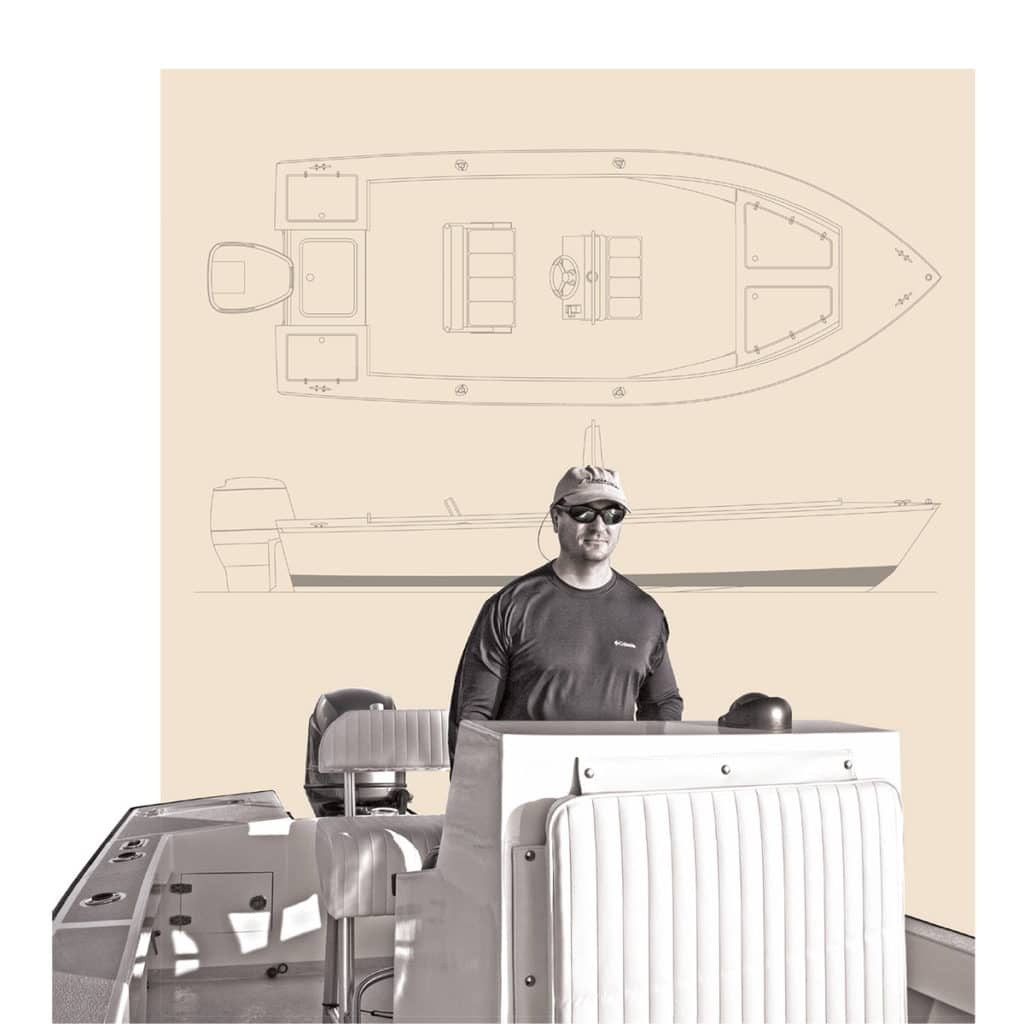
Wade Stephan’s OB19
Finished Cost: $12,000 (not including power)
Wade Stephan is a physical therapist by trade. Five years ago he had an itch for a center-console, and he clearly wanted it to be one of a kind. It took him 2½ years of part-time work, wedged in between his career, grass cutting and family tending, to finish the boat he uses to ply Pine Island Sound, Florida, between Cape Coral and Captiva Pass.
“I didn’t log my hours,” Stephan said. “I didn’t want to know!”
For most boatbuilders, that’s only part of the truth. They don’t want to know how much cash they invested in it either. It can be a bargain if you count your time invested as given to play, but if you just want to go boating or fishing, you can achieve that goal faster rewiring and repainting somebody’s backyard birdbath. Boatbuilders find the woodworking therapeutic.
“In the first two years, I put in about 20 hours a month. After two years of that, I had a boat and suddenly got really motivated. Then I was putting in 20-plus hours a week,” he said.
Wade started with a kit from bateau.com. All the parts were pre-cut with a CNC router with only a few tabs left to hold them in their respective sheets of plywood.
“The kit got me to where I had a basic boat and it was up to me to finish it,” Wade said. “I took console measurements from a 23 SeaCraft, and a friend helped me design that and I built it in. Now Bateau has a plan for a console.”
“It’s not quite a yacht finish but way more than an a workboat finish. The last 10 percent of a smooth glassy finish is 40 percent more work,” Wade warned. “I built it upside down on a jig. I had no clue what I was doing and used too much fairing compound. Apply, sand off, apply, sand off. But by the time I flipped it, I understood what I was doing and the inside went faster.”
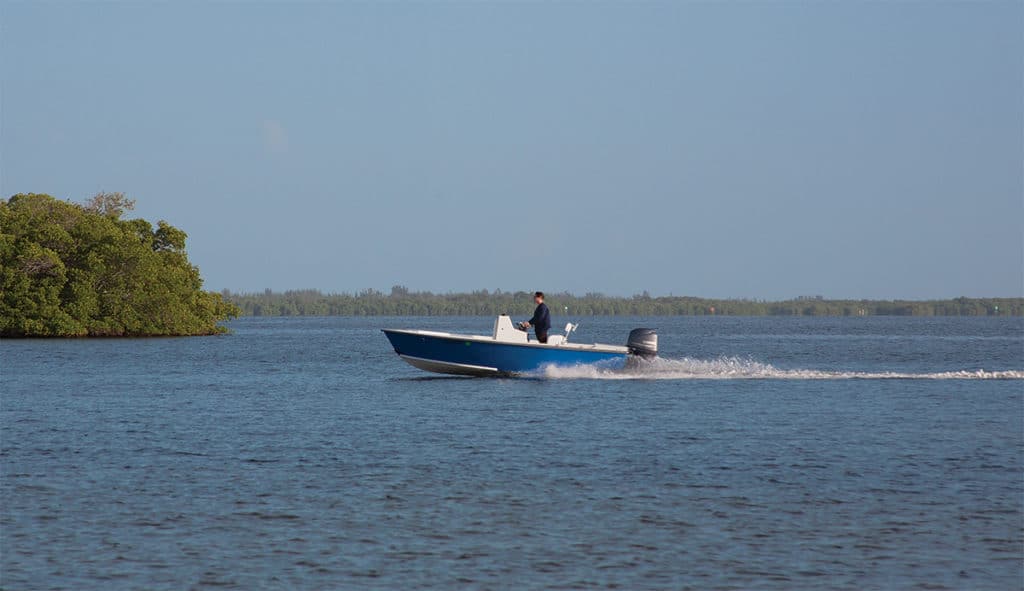
Two questions everybody asks home builders are “Why not just buy one?” and “What made you think you could do it?”
“I don’t know exactly why I built one but I always thought it would be interesting, and I studied its [bateau.com’s] forum a year and a half before I started. I wasn’t sure it would be feasible, but I saw normal people with normal jobs making good progress so I decided I could do it. It was the biggest one project I’ve ever done. Two and a half years on one thing was a lot. To some extent it’s woodworking but it’s not always fine joinery. It’s getting things to fit right and then epoxy to fill. You don’t want fine joinery work because you want gaps for epoxy to adhere within.”
For Wade, the hardest part was setting up the jig, a sort of frame the hull rests on upside down while under construction. Made right, the jig ensures a true hull that rides beautifully. Made wrong, the hull is not only hard to fit, but it also warps and runs poorly.
“The strongback has to be a perfect rectangle — all corners are 90 degrees. You have to get the frames, cross members and beams in exactly the right distance from the transom. Measure from the forward face of them. Then use a square to square them and lock them in with temporary screws. Then lay stringers. They are all notched to fit down into each other. That done, you are 90 percent of the way to having a true boat.”
Wade overpowered his boat, his friends said, with a 115 Yamaha four-stroke. “Everybody said a 70 or 90 would be good, but I didn’t want that.”
It is a little heavy at the transom, Wade said, but he compensated, putting a 57-gallon fuel tank amidships. “It’s a really solid boat. I’ve been super happy with it. I like it a lot. It tops out at 39 knots and floats high in the water, and if you keep the prow down, it will run through 2-foot chop.”
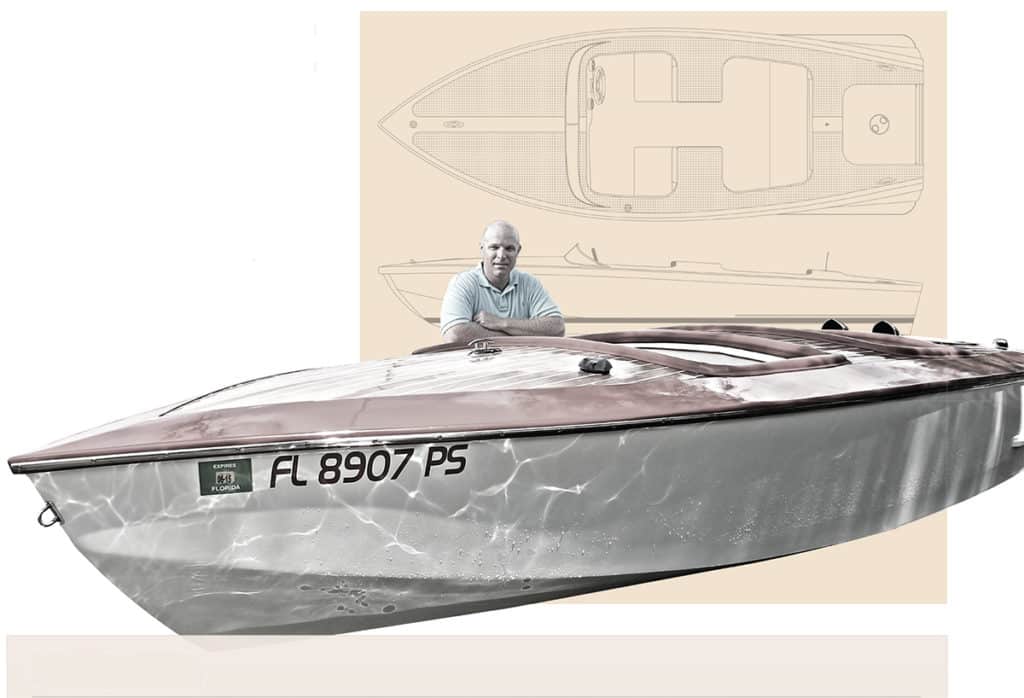
Joel Shine’s Jetabout RB18
Finished Cost: $9,500 (including power)
Joel Shine is not an engineer or a carpenter and wasn’t even really a woodworker when he started building boats.
“I was a finance major and eventually an MBA,” Joel said. He built a mortgage company and opened a branch in Florida so he could return to his childhood fishing waters.
“I’d built the free canoe plan and the boat came out beautifully. It was fun because you can almost build it in a weekend. Then I wanted a flats boat. I bought the plans from bateau.com but never built it.”
When he returned to Florida, he found that Jacques Mertens-Goossens (founder of bateau.com) was only 10 miles from his new home and bought another plan set for a flats boat. One thing led to another and soon Joel was working part-time for Jacques. Not long after that the mortgage business wasn’t as lucrative as the online boat design and building supply business.
“I bought the plans for a Phantom16 flats boat,” Joel said. “I built it from foam core. It was only going to be 150 to 200 pounds lighter than a plywood build and a lot more difficult to build, but I was stubborn and wanted to do it.”
Joel had built several skiffs and canoes when he tackled his jet-powered RB18, but this was his first runabout.
“It was a novelty, something nobody else had done accept a couple of hobbyists,” Joel said. His build would end up being the basis for a new plan now available at bateau.com.
“You can have this boat for under $10,000,” he said. “I paid $4,500 for a Jet Ski and used every part, gauges, gas tank, exhaust; cut the bottom of the Jet Ski out and spliced it into the hull.”
The design sounds complicated but it really wasn’t. Joel built the standard outboard version of the RB18. Then he found a reliable but not desirable Jet Ski and cut the bottom out of it. He cut a smaller opening in the bottom of his RB18 and laid the Jet Ski hull into it.
“We glassed it in and faired it out, and then flipped it and did the same from the bottom. It was far easier than building engine mounts and stringers and other systems,” he said. The new plans even have cutting patterns for a typical sacrificial personal watercraft (PWC).
“The design uses the old Jet Ski’s ride plate and the assembly makes a sort of pad out of the PWC that the boat rides on,” he said. Using the Jet Ski ride plate in this fashion eliminated cavitation — a common problem home builders discovered while installing a fully disassembled jet pump.
“Ultimately the design is pretty simple. We assume the builders know nothing and design the plans to accommodate them,” said Joel. “Putting in a jet drive would have been very complicated if we’d tried to mount it ourselves.
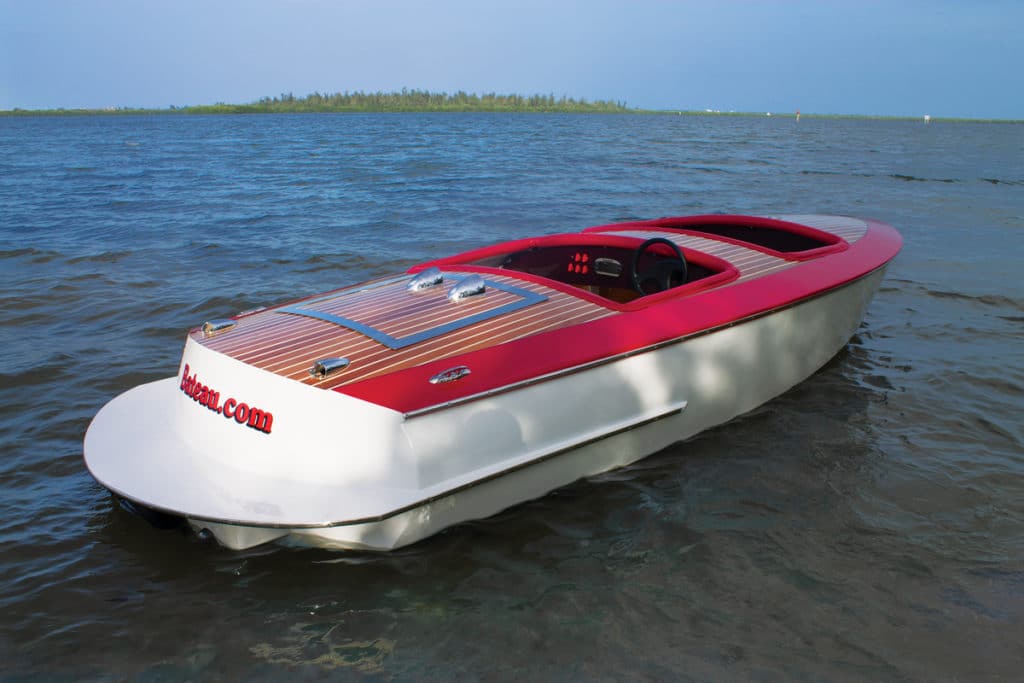
Bateau.com
Jacques Mertens-Goossens built his first boat nearly 50 years ago. It was a kayak and a lab project for a college course in yacht design in Belgium. He never stopped building boats and made hull design his career. But his career as a boat-plan designer and seller was slow to start.
“Before the Web, I just gave my plans away. I found a couple boat chat groups and we talked of boatbuilding. I created a file with 10 boats in it and gave it away,” he said. He was teaching himself computer-aided design (CAD) and ultimately used his skills at Cigarette, Kady-Krogen and Pursuit Boats.
One boat was the D3, a pram used as a tender, rowboat and sailing vessel. “Some say there are over 100,000 of those built today,” Jacques said. “I see them everywhere. ”
Then, in 1993, Jacques created his first website (bateau.com) and began selling his plans online. It was so successful he had to buy his own server in 1995. That was pretty cutting-edge time in online commerce, but Jacques’ plans were distinctly traditional, retro styles reminiscent of the early days of wood-built boats.
“I must’ve built at least 20 boats with my own hands,” Jacques said. “The largest was a 41 and I sailed the ocean on it. My favorite is always the next one I am designing!”

